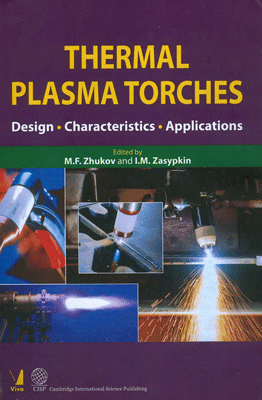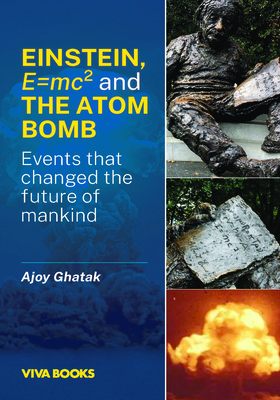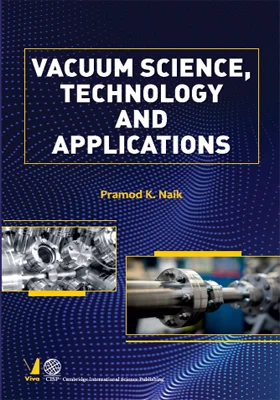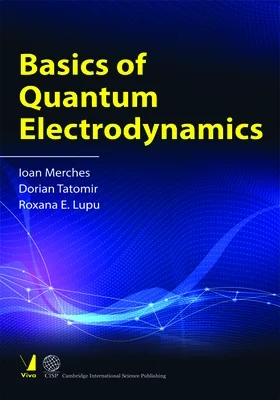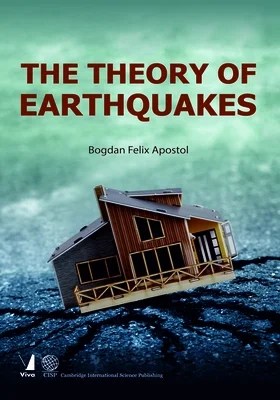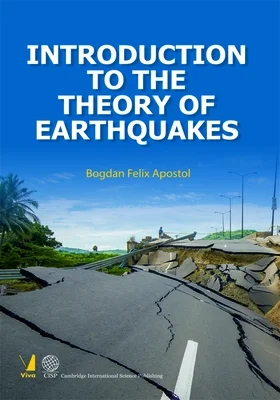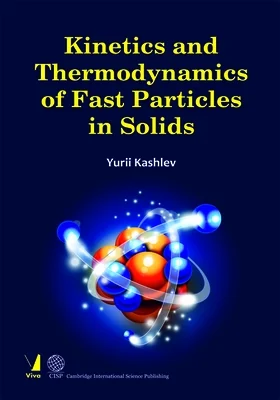Thermal Plasma Torches
Thermal Plasma Torches
Design, Characteristics, Applications
₹1,795.50 ₹1,995.00 Save: ₹199.50 (10%)
Go to cartISBN: 9789386385833
Bind: Hardbound
Year: 2017
Pages: 616
Size: 153 x 229 mm
Publisher: Cambridge International Science Publishing
Published in India by: Viva Books
Exclusive Distributors: Viva Books
Sales Territory: India, Nepal, Pakistan, Bangladesh, Sri Lanka
Description:
Describes the results of experimental research of plasma torches
• Proposes a simple classification of linear plasma torches
• Outlines engineering methods of processing experimental data together with the electrical and thermal characteristics of plasma torches of different design in criterial form
• Pays special attentions to the problem of plasma torch stability to extend their operating life
• Discusses the characteristics of individual types of the design of plasma torches (using direct and alternating current)
• Outlines the operating properties and description of plasma-chemical reactors and plasma torch reactors for various high-temperature processes
The book will be useful to specialists in the field of application of thermal plasma torches and designers of plasma chemical equipment.
Target Audience:
The book will be useful to specialists in the field of application of thermal plasma torches and designers of plasma chemical equipment.
Contents:
Chapter 1: Brief Description of Thermal Plasma and Electric Heating of Gas • Formation of the electric arc and the properties of arc plasma • Electric arc gas heaters • plasma torches
Chapter 2: Electrophysical and Aerodynamic Processes in a Plasma Torch • Special features of the flow of cold gas in a long cylindrical channel • Special features of burning of the electric arc in a long cylindrical channel • Speed and pulsation characteristics of arc elements • Tomographic investigations of the electric arc • Brief review • Experimental investigations of a non-stationary electric arch plasma • Shunting • Qualitative pattern • Some qualitative results of examination of the shunting process • Electric discharge between solids • Pulsations of the ?radial? section of the arc in the output electrode of AN axial plasma torch • Self-oscillations of the parameters of the electric arc • Aerodynamics of the internal electrode • Aerodynamics of the cylindrical output electrode with sudden expansion
Chapter 3: Mathematical Methods of Investigating Arc Discharges • Main equations of electric arc plasma • The system of MGD equations • Approximation of the MGD boundary layer • Integral relationships • Analytical models of arc discharge • The distribution of temperature in cylindrical arcs • The dynamics of the long arc in external fields • Effect of electromagnetic forces on the formation of plasma flows in arcs • Numerical analysis on the basis of the equations of the boundary layer • Numerical analysis on the basis of a system of MGD equations • Nonequilibrium processes in arc discharge plasma • The arc in the turbulent flow • Turbulence model • Analysis of the results
Chapter 4: Modelling of Processes in Electric Arc Plasma Torches • Concept of modeling of processes • Methods for determining similarity criteria • Similarity criteria of electric arc processes • Physical meaning of similarity criteria • Method for generalizing experimental results
Chapter 5: Energy Characteristics of the Arc in Different Gases • Generalised volt?ampere characteristics of the arc in different gases • Energy characteristics of the arc in plasma torches with inter-electrode inserts • Distribution of the strength of the electrical field of the arc in a long cylindrical channel • Dependence of the strength of the electrical field of the arc on the determining parameters in the initial and transition sections of the channel • Variation of arcing voltage by the gas-dynamic effect • Dependence of the strength of the electrical field of the arc on the determining parameters in the section of the developed turbulent flow of the gas • The energy characteristics of the arc in a porous channel • Strength of the electrical field of the arc in hydrogen and hydrogen?containing media • The length of the characteristic sections of gas flow in a channel • Strength of the electrical field of the hydrogen arc in the initial section of the channel • Strength of the electrical field of the arc in a developed turbulent hydrogen flow • Electrical arc in a mixture of gases
Chapter 6: Heat Exchange in the Electric Arc Chamber of a Linear Plasma Torch • Integral thermal characteristics of plasma torches with the self-setting and fixed (using a ledge) aRC length • Heat losses in the discharge chamber of the plasma torch with the inter-electrode insert • Heat losses in the plasma torch with gas vortex stabilisation of the arc • The characteristics of the arc in the axial gas flow • Heat exchange of the electrical arc in the turbulent gas flow with the walls of the discharge chamber • Heat exchange in the initial section of the channel • Heat exchange in the section of the developed turbulent flow of gas • The efficiency of gas screen of the wall of the discharge chamber • Distribution of current and heat exchange in the output electrode of the plasma torch with an inter-electrode insert • Thermal efficiency of the plasma torch with the inter-electrode insert • Electric arc generator of low temperature plasma with a gas vortex inter-electrode insert • Heat exchange in the combined and permeable channel with intensive gas blowing • Heat exchange of the hydrogen arc with the walls of the electric discharge chamber • Heat flow into the end cathode • The heat flow in the section of the inter-electrode insert and the starting electrode • The heat flow into the output electrode?anode • Generalised thermal characteristic of the steam-vortex plasma torch
Chapter 7: Direct Current Linear Plasma Torches • Classification of linear plasma torches • Plasma torches with the self-setting arc length • Single -chamber plasma torches • The two-chamber plasma torch • The two-chamber plasma torch with an extended arc • Plasma torch with the mean arc length fixed with a ledge • Plasma torches with the mean arc length fixed by the inter-electrode insert • Plasma torches for heating hydrogen and water-containing media • The unified plasma torch (PUN-3) for spraying • Plasma torches with a split arc • Plasma torch with longitudinal splitting of the arc in the output electrode • Plasma torch with a divided radial section of the arc • Plasma torch with a split input cathode section of the arc • A plasma torch with diffusion attachment of the cathode section of the arc to the surface of a tubular electrode • Multi-arc cathode without ballast resistances in the electrical circuit
Chapter 8: Two-Jet Plasma Torches • The two-jet plasma torch with stationary arc spots • The scheme of the plasma torch and its electrical power supply • The anode and cathode sections • Service life characteristics of electrodes • Thermal and electrical characteristics • The temperature field of the plasma flow • The electrical structure of the plasma flow • Interaction between current-conducting plasma jets • The two-jet plasma torch with a scanning arc and stationary arc spots • Electrical characteristics • Interaction of the electrical arc with the surface of the solid • Two-jet plasma torch with tubular electrodes • Design of the plasma torch and electrical circuit • The plasma torch characteristics
Chapter 9: Alternating Current Plasma Torches Using Industrial Frequency • Single-phase AC plasma torch • Special features of powering the alternating current arc • Combined burning of high current and high-frequency arcs • Volt?ampere characteristics of the AC arc, burning in a phase laminar vortex plasma torch • Three-phase plasma torches of the Zvezda type • The scheme of the plasma torch and operating principle • Volt?ampere and thermal characteristics of the arc • Generalised working characteristics of plasma torches • Three-phase plasma torches with the triangle-type connection • Plasma torches with rod electrodes • AC plasma torches with rail tubular electrodes • Main physical processes in discharge chambers of high-power three-phase plasma generators • Near-electrode processes • High-voltage multi-electrode plasma torch
Chapter 10: Near-Electrode Processes and Methods of Reducing Electrode Erosion • Heat flows into the electrodes through arc spots • The form of the eroded surface of a rod thermal cathode with a stationary arc spot • Specific erosion of tungsten thermal cathodes • Specific erosion of thermal chemical cathodes • Structure of the internal surface of the cylindrical hollow tungsten cathode • Special features of the structure of the working surface of rod tungsten under the effect of the reference spot of the arc • Review of studies of self-restoring cathodes • The rate of increase of the mass of the cathode in a carbon containing medium • Erosion of copper cold tubular electrodes • Dependence of specific electrode erosion on current • Effect of the speed of travel of the radial section of the arc and of its axial scanning on specific erosion • Effect of axial magnetic induction on the erosion rate • Aeromagnetic axial scanning of the radial section of the arc in the internal tubular electrode-cathode • Effect of surface temperature of the copper electrode on specific erosion • Magnetic control of the behaviour of the radial section of the arc in the plasma torch • Role of oxygen in reducing the operating life of the electrode • Integral characteristic of specific erosion of the output copper tubular anode • Fields of temperature and thermal stresses in the electrode of the plasma torch • Structure of the material of the subsurface layer of a tubular electrode • Methods of reducing the erosion rate of copper tubular electrodes
Chapter 11: Plasma Reactors • Multijet reactors • Kinematic scheme • Thermal efficiency • Pulsations of total pressure • Hydrodynamic and thermal engineering characteristics of a three-jet reactor • Some apparatus schemes of high-temperature synthesis reactors • Reactors based on a multi-jet mixing chamber • Thermal engineering characteristics of a three-jet direct flow reactor • Energy balance of the reactor • Combined DC reactor with electromagnetic control • Principal circuit of the reactor • Electromagnetic method of forming a rising volt?ampere characteristic of the arc • Effect of the gas flow rate and the method of introduction of the gas into the reactor of the volt?ampere characteristic of the arc • Thermal characteristics of the reactor • 400 kW industrial reactor for producing melted zirconium • Plasma coaxial reactors • Coaxial electric arc DC plasma torch • Coaxial plasma torch?reactor • Coaxial DC reactor with electromagnetic control • A reactor based on a linear plasma torch for pyrolysis and processing chemical production waste • Production of acetone and ethylene from oil products • Processing organic and chlorine organic chemical production waste
Conclusions
Index
